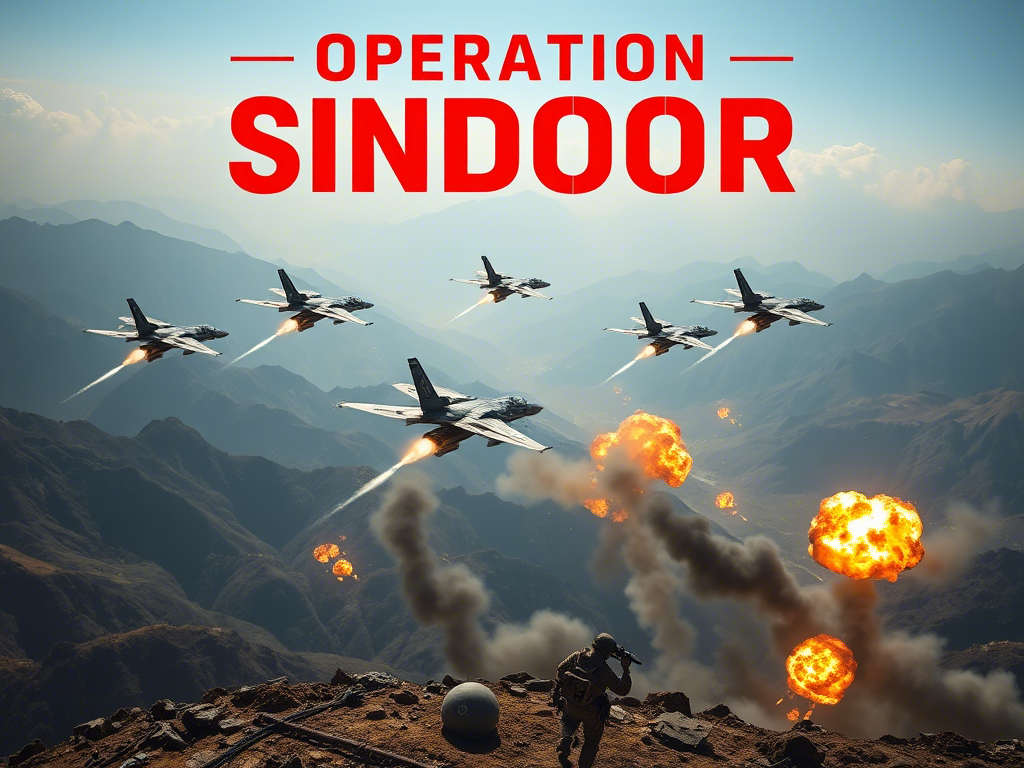Operation Sindoor: India’s Message Was Loud, Clear, and Long Overdue

Ever had that moment when you’ve just had enough?
Like when someone keeps pushing your buttons, and finally, you draw the line. That’s pretty much what happened with India’s Operation Sindoor — only this wasn’t a playground fight. It was a meticulously executed counter-terror strike that sent ripples far beyond the Line of Control.
And honestly? It was about time.
The Breaking Point: When Patience Meets Provocation
Let’s rewind a bit.
Over the past few months, terror activities from across the border had spiked again — ambushes in Jammu and Kashmir, attacks on our armed forces, and innocent civilians caught in the crossfire. It wasn’t the first time, and unfortunately, it probably won’t be the last.
But here’s the thing: India’s patience isn’t weakness.
We’ve been diplomatic, restrained, and calculated. But when terror groups like Jaish-e-Mohammed and Lashkar-e-Taiba continue to get safe havens in Pakistan, well… something’s gotta give.
Operation Sindoor
Launched in the early hours of May 7, Operation Sindoor wasn’t just another strike—it was a message wrapped in precision. The name itself, “Sindoor,” is deeply symbolic—representing both sacrifice and identity, particularly in Indian culture.
Here’s what we know so far:
• The operation targeted specific terror infrastructure across the border.
• It involved coordinated air and ground strikes, with real-time satellite surveillance.
• It was conducted with surgical precision, minimizing collateral damage.
According to Defence Minister Rajnath Singh, this was a “measured and necessary action to ensure the safety of Indian citizens.”
And you know what? He’s not wrong.
Why This Strike Feels Different
We’ve seen similar operations before—Uri in 2016, Balakot in 2019—but Sindoor feels sharper, quieter, and more resolute.
Maybe it’s because this time, there wasn’t a massive pre-hype. No over-the-top press briefings. Just a mission, executed and confirmed. Like a warning whispered into the enemy’s ear—don’t test us again.
And from a geopolitical perspective, this strike hit all the right notes:
• It was non-escalatory yet assertive.
• It respected international norms by targeting only non-state actors.
• It reaffirmed India’s strategic autonomy and refusal to be bullied.
The Global Lens: Applause, Silence, and Shrugs
Predictably, Pakistan denied the strike even happened. But then again, that’s the same script they use every time.
Meanwhile, international reactions poured in fast:
• The US and France backed India’s right to self-defence.
• Israel quietly nodded, having long supported India’s anti-terror stance.
• China stayed mum, as usual, calculating its own chess moves in the background.
By the way, the diplomatic messaging from India was crystal clear:
We didn’t go looking for a fight—but we’re not running from one either.
What This Means for Us, the People
Now, let’s get real for a second. As an Indian, watching the news, I felt a mix of pride and pain. Pride in our armed forces. Pain that we still have to fight these battles after decades of cross-border terror.
And yet, this is the India we’ve grown into—not just strong, but smart. Bold, yet balanced.
For families of soldiers, for the children in border villages, and for citizens like you and me, Operation Sindoor isn’t just military news—it’s reassurance. That someone’s got our back. That our pain won’t be forgotten. That silence will be met with strength.
Operation Sindoor – Quick Answers
Q. What is Operation Sindoor?
A. Operation Sindoor is a precision strike conducted by India on May 7, 2025, targeting terrorist camps in Pakistan.
Q. Why did India carry out Operation Sindoor?
A. The operation was in response to escalating cross-border terror attacks in Jammu and Kashmir, aimed at neutralizing threats from groups like LeT and JeM.
Q. Was the operation against the Pakistani military?
A. No. It targeted non-state actors (terror groups), avoiding any direct conflict with the Pakistani military to prevent escalation.
Q. Is this similar to Balakot?
A. Yes, in strategy—but Sindoor was quieter, more surgical, and arguably more symbolic.
Drawing the Line
Operation Sindoor wasn’t just about destroying a few terror camps—it was about restoring deterrence. About showing the world that India may walk the path of peace, but we won’t be walked over.


